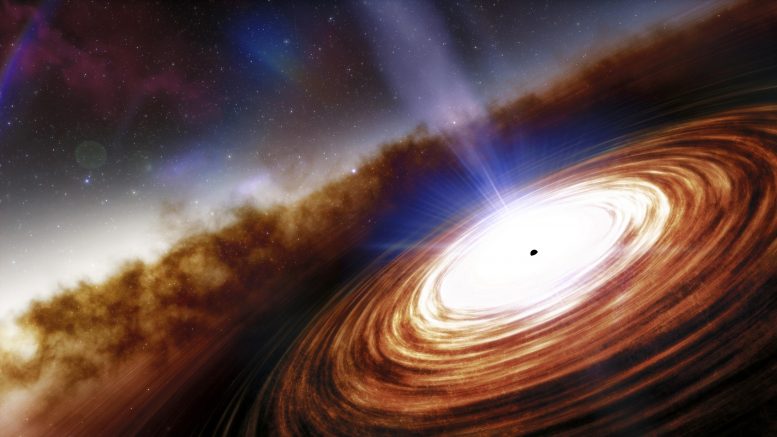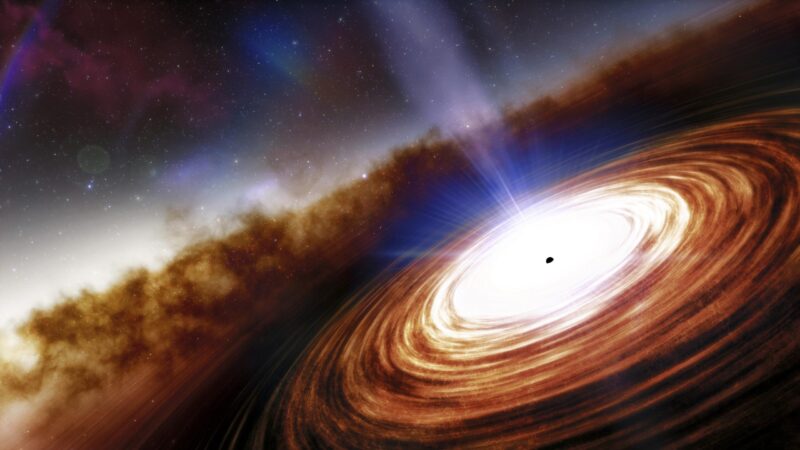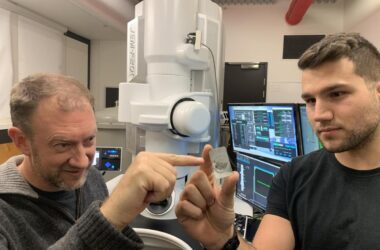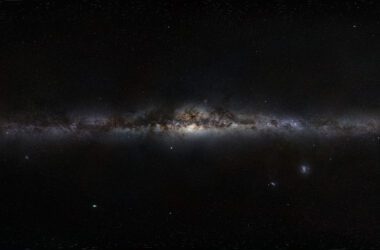
Illustration d’un quasar. Crédit : NOIRLab/NSF/AURA/J. da Silva
HE Zhicheng et ses collègues de l’Université des Sciences et Technologies de Chine (USTC) de l’Académie des Sciences de Chine ont créé une nouvelle méthode pour mesurer les propriétés physiques du gaz ionisé galactique, et ont découvert pour la première fois l’accélération de l’écoulement des quasars à l’échelle de dizaines de parsecs. Leur article a été publié sur Science Advances.
Selon les théories modernes sur la formation et l’évolution des galaxies, le mécanisme de rétroaction des noyaux galactiques actifs (NGA) suggère que le gigantesque black hole at a galactic center modulates its evolution by blowing ionized gas, namely the quasar outflow, preventing a potential oversized growth of black hole. The outflow, which transports matter and energy to host galaxies, serves as one of the predominant ways of AGN feedback.
However, little was known about the outflow of active galaxies, for a key factor, the scale of outflows was mainly deduced from spectroscopic blueshifted adsorption lines (BAL). The obtained results were not reliable enough due to their heavy reliance on models.
Dr. HE developed a new approach based on his previous studies. He proposed that BAL variation could be a powerful tool in probing outflows. In this work, he advanced this method by considering both the amplitude and the phase of the function which describes the response of ionized gas under radiation. They obtained the kinetic information regarding quasar outflows, and discovered the acceleration at a scale of tens of parsecs for the first time, which far exceeded that predicted by the traditional accretion disk wind model.
Interstellar dust could be a major reason for the acceleration, as proposed by Dr. HE and other fellow scholars, since the cross section between dust and accretion disk ultraviolet radiation far exceeds that of Thomson scattering of free electrons. Their calculations proved this hypothesis, and the speculated scale of outflow origin matched that of the dust ring, firmly supporting their theory.
The findings indicated that dust did play an important role in the linkage between accretion disk radiation and interstellar media, and the significant effect of outflows on host galaxies was proven as well. The findings were also consistent with the evidence of outflows’ suppression on star formations, which was discovered recently by Dr. HE and his collaborators.
Reference: “Evidence for quasar fast outflows being accelerated at the scale of tens of parsecs” by Zhicheng He, Guilin Liu, Tinggui Wang, Guobin Mou, Richard Green, Weihao Bian, Huiyuan Wang, Luis C. Ho, Mouyuan Sun, Lu Shen, Nahum Arav, Chen Chen, Qingwen Wu, Hengxiao Guo, Zesen Lin, Junyao Li and Weimin Yi, 11 February 2022, Science Advances.
DOI: 10.1126/sciadv.abk3291



